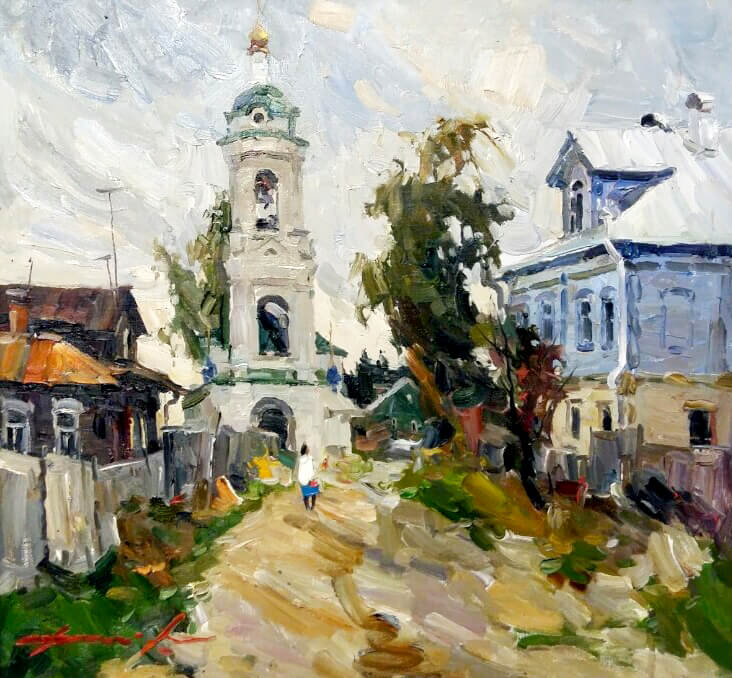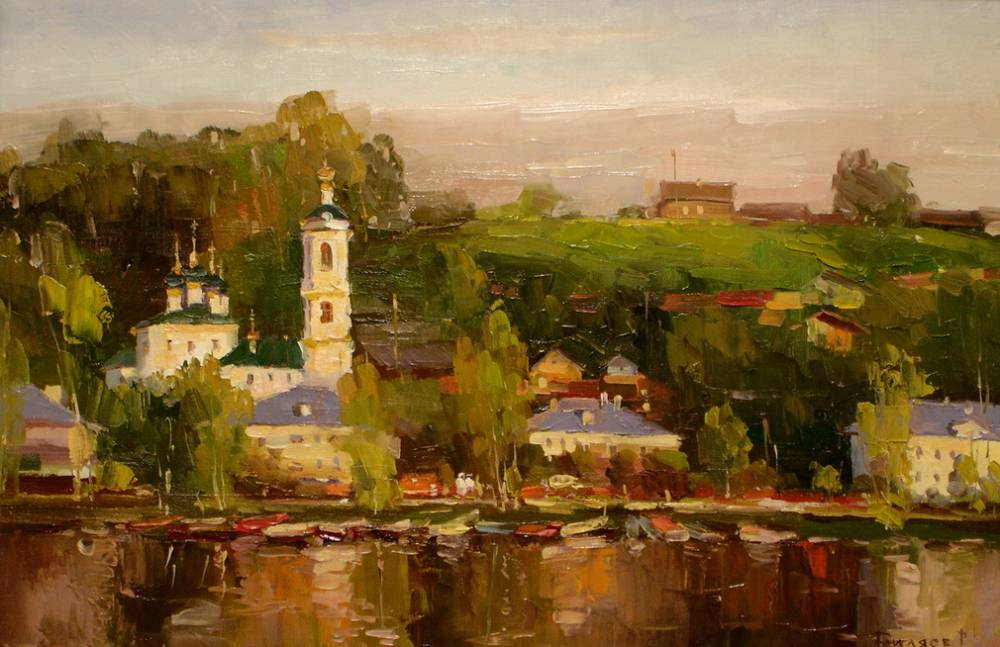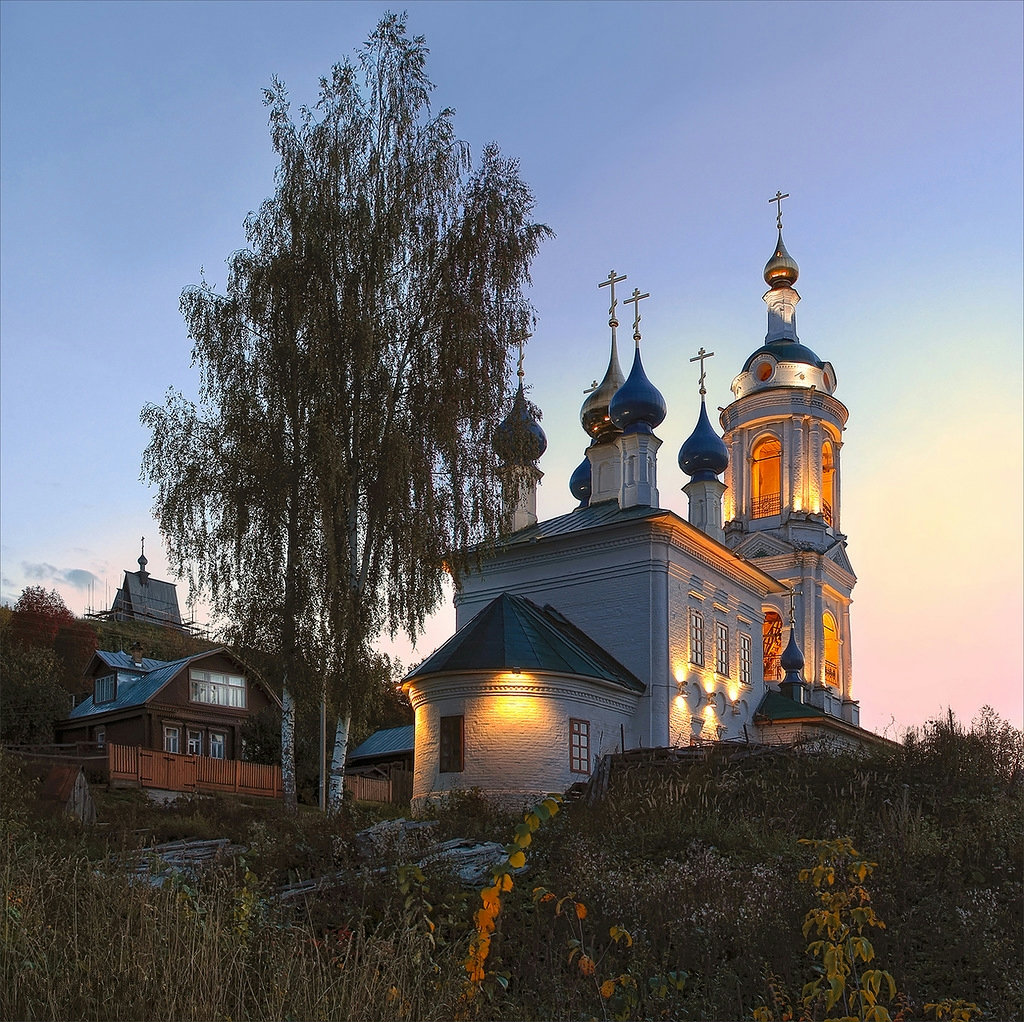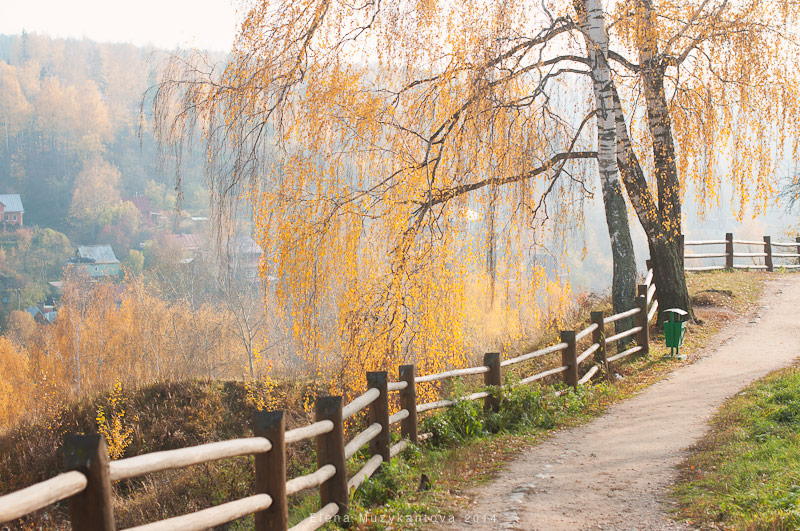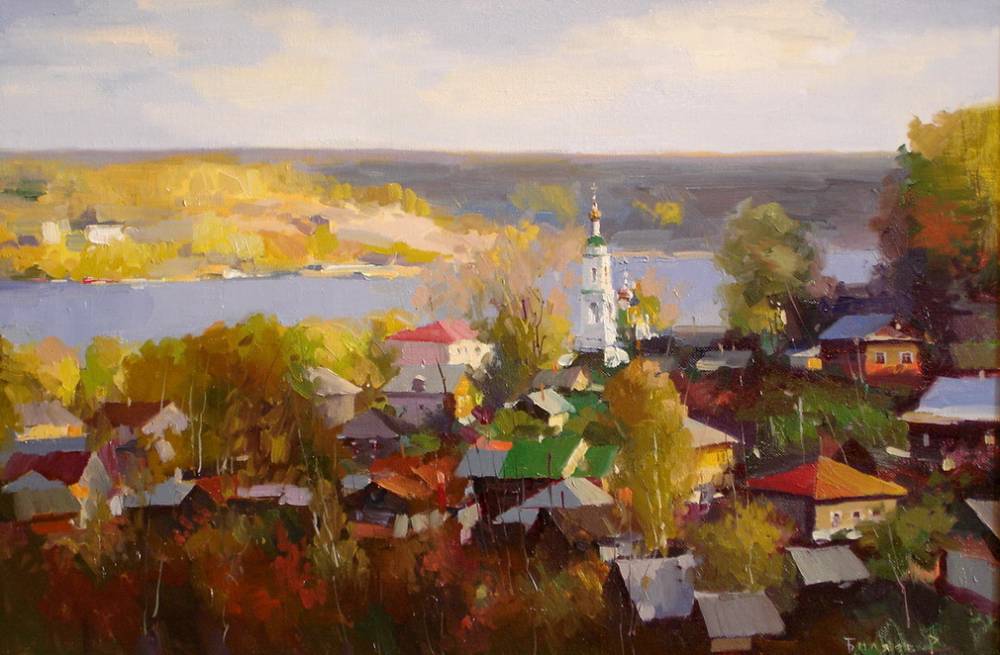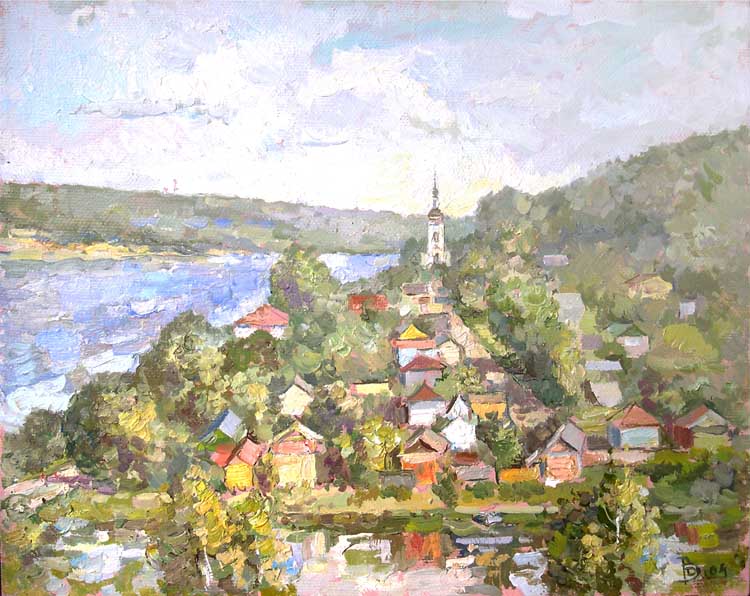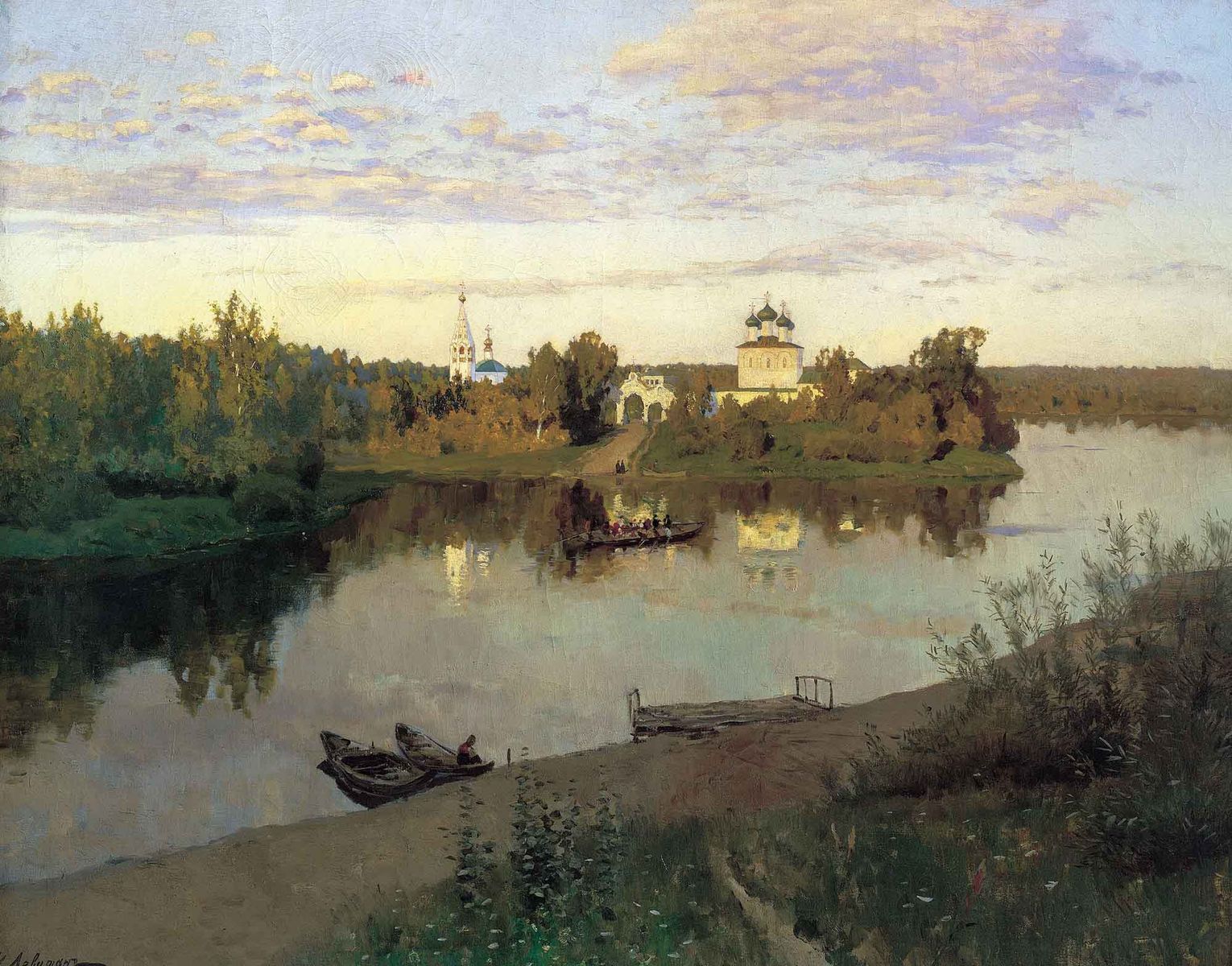The history of Ples
Ples is a small town in the upper reaches of the Volga River. This is not a regional center, there are no textile factories here, as in other cities of the Ivanovo region, - there is no industry to speak of at all. Yet still, at any time of the year, on any day of the week, there are many visitors here – both Russians and foreigners, who are attracted by the elusive charm of Ples. It would seem that this charm has an almost physical force, similar to the force of gravity of the Earth. It is unlikely that physicists could measure it with their instruments, but historians can definitely tell where it comes from.
Every event in history, regardless of whether it is reflected in the annals or not, is a special case of human life. It is the heartbeat, tears and sweat, love and friendship, children's laughter and the quiet lullaby of a mother, a distant, yet, it seems, such a familiar woman. The energy of this life does not disappear with time. It is preserved here, in Ples landscapes, its ravines and hills, in the silhouettes of Ples churches, in the almost fabulous facades of local houses, in the Ples land itself, in the "cultural layer" (as archaeologists would say), and maybe somewhere very deep – in the genes of the local invisible to the human eye old-timers.
There are two important dates for Ples. One of them is 1410, when Prince Vasily of Moscow ordered to build the fortress of Pleso not far from here, on the opposite bank of the Shokhonka River, on top of a hill which we now call Cathedral Hill. Yet this is not the beginning of Ples' history. Several centuries earlier a town "on the river stretch" (a "ples" in Russian) was mentioned in Russian chronicles under the year 1141. This means that Ples is several years older than Moscow itself and will soon celebrate its 875th anniversary! And not Moscow was the centre of the young state in the 12th century, but the town of Suzdal, the capital of the vast principality of Yuri Dolgoruky. And it was in relation with the capital, then called "Suzhdal" that the first mention of Ples was connected with: Ples was the place between the two centres of northern Russia – Novgorod and Suzdal, where travellers – merchants, pilgrims, warriors – had to transfer from Volga boats onto horses and move on over land. This is what the chronicler tells us about: how the governor of Novgorod, Yakun Miroslavich, was on his way to Suzdal where his patron prince was waiting for his arrival. By the way, the contours of the princely fortress can still be seen in Suzdal today: along the line where the 12th century ramparts stood there is a street with an unusual name – Teremki, meaning "the palatial".
But people lived here on the Volga shores even earlier, only this is no longer confirmed by written sources, but by the finds of archaeologists – fragments of ceramic dishes, household items, jewelry. The looks of these artefacts, and the beliefs and traditions associated with them suggest that they belonged to a very ancient culture quite unlike the modern Russian one.
However, it happens that old grandmothers tell their grandchildren a story that seems to have come down to us from those very times. Few people have heard it. It is not for vain ears. Maybe it is a mysterious legacy of those times, or maybe it is a special way to preserve the memory of the past, intuitively created by our people. One way or another, but only on the heaviest winter evenings, when there is so much snow that the doors and windows are covered by two-thirds, here, in Ples, on the right bank of the Shokhonka River, you can hear this story. And there is no need to hurry: anyway, you can only leave the house in the morning, and even then through the chimney.
"Grandma Xenia, tell us, how long have people been living here?"
"Where - here? You mean in this house?"
"No. Here in Ples. This street."
"Oh, they've been living here forever in our Ples. And on the Varvarka street - for a thousand years."
And Grandma Xenia is mostly correct. Archaeological excavations are carried out in Ples every year, and their scientific results invariably confirm the uncomplicated wisdom of the old people.
Indeed, individual artefacts up to ten thousand years old from the Mesolithic era or the Middle Stone Age are often found in Ples. However, no signs of Palaeolithic man, the people from the time of the mammoths and cave paintings, have yet been found. Yet. Experts say that the landscape of Ples was formed by a glacier retreating to the north, which indicates the possibility of such finds in the future.
And as for the thousand-year history of Varvarinskaya Street, Grandmother Xenia is absolutely right here. In 2014 archaeological excavations were carried out on the site of house No. 18. The telling finds of jewellery and household items, as well as their dating made in the science labs, confirm that people have been living in this place for at least a thousand years.
"Grandma Xenia, were these people the same as us?"
"Quite so, and yet not quite. They say the ancient people were tall and strong."
And we will add that they were blue-eyed, fair-haired, broad-faced and with prominent cheekbones. The anthropological type of these people from previous millennia is well known. And yet by their height, on average, they were slightly lower than today's people of Ples. But they certainly weren't less in body strength. And no wonder - here on the Ples hills the whole way of life turned bones into stone and muscles into steel.
And these people spoke in an ancient language quite unlike modern Russian. Perhaps there is hardly a person on Earth today to whom this language would be understandable, but most likely the inhabitants of the Northern Urals, and maybe even modern Karelians and Finns, would feel some primordial kinship to these languages. This ancient language has almost disappeared. We only know the names of rivers, lakes, some towns and villages, and the names of some household items. Consider the Lake Nero at the town of Rostov, vast but shallow, overgrown with grass – in ancient times this word meant "swamp or wet place." In the Ivanovo region there are many rivers with strangely similar names – Shokhonka, Shukhomka, Shacha, Shah. Even today the inhabitants of Ples district call any river flowing into the Volga a "shacha". There are many settlement names that have to obvious meaning to the Russian ear – Reshma, Kineshma, Kokhma – names the meanings of which are no longer completely clear.
Fortunately we know what these people called themselves - the Merya. By this name they are known both in ancient Russian chronicles and in Western European annals. Experts in ancient languages believe that the word "merya" could be translated as "mortal people" - that is people in general, people as different from both wild animals and immortal spirits.
Animals and spirits inhabited the forests, rivers, and swamps surrounding the Meryan settlements. These people worshipped animals and spirits, but at the same time sought to subjugate them. Still we know very little about their beliefs, despite the constantly multiplying archaeological finds, as well as linguistic and ethnological research. We know that the origin myth of these people was how the world arose from a duck egg. We know that they worshipped animals and plants. We know that the greatest hero of their legends was a horse tamer. The main amulet of each family, passed down from father to son, to the eldest man in the family, is a cast figure of a hero holding two rearing horses by the bridle. Since ancient times they buried their leaders along with their warhorses, decorating them with heavy and expensive headdresses made of many ringing noisy plaques and pendants. Many kilograms of silver, copper and bronze were used for these decorations. They decorated their own outfits, male and female, in a similar way. A rich Merya person could be heard from far away: noisy precious signs would announce his dignity on approach. And if they also shone in the sun, so much the better.
"Grandma Xenia, what about us Russians? Does it mean we сame here not long ago?"
"Of course not! Me, my grandmother, and her grandmother all lived here in Ples. Our line has been living here for thirty generation. Only before that the Russians came from the West. And so they settled all over Russia, and they united the whole of Russia with their own language."
Yet again, this is mostly true. It is not quite accurate to call the first Western settlers here Russians, because the Russian nationality only begins to take shape from a number of different peoples only after their arrival. Here on the right bank of the Volga in Ples first came the Slavic tribe of Krivichi. This happened almost a millennium ago.
The settlers called themselves "Slovenes", which meant "people who speak the word", that is, speaking an understandable well-known language. And there is also a folk history behind this self–designation, because the Slavs had to meet both Greeks and Germans during their migrations - and with those who used unintelligible "croaking" speech, and with those who spoke so vaguely that they almost did not differ from the mutes. But to the credit of our ancestors it is worth saying that all these meetings did not embitter them and did not turn them into ruthless conquerors. They went East occupying vast expanses of the East European plain in search of arable land, not conquering them, but trying to get along peacefully with those who have inhabited the local forests for centuries.
So it was on Lake Nero and on Lake Kleshchina in the Yaroslavl region next to us. This happened in the Ples Volga region too. Here on a high hill they met the Meryan settlement of Chuvil, with villages scattered around it along the right bank of the Volga. And they stayed on vast unoccupied flat areas below the hills. Among other regions, they inhabited a small flat terrace above the floodplain on the right bank of the Shokhonka, at the foot of the hill which is now called Levitan Hill.
The Meryans did not try to rule over the Slavs. Maybe the people of Merya saw in the aliens the same mortal people, neither spirits nor animals. And the fact that they spoke a different language, dressed differently and decorated their clothes in distinct ways, was not as important.
The Slavs did not seek to conquer Merya. And there were several reasons for that. But the main two are that the Slavs themselves already recognized the power of the Grand Prince of Russia Yaroslav the Wise and his descendants over themselves, and that the whole of Russia, from princes to commoners, recognized the power of the Christian God over themselves. But God created all men in His own image, and He awaits all His sons and daughters in His house.
"Grandma Xenia, how did the speak to each other? Who of them were more of our forbearers? Who of them was the grand-grandma of your grand-grandma?"
"Oh then, listen to how they talked. It is not easy for people to live while not understanding each other. But even those who live in peace and harmony can find it hard to get through."
Living side by side, both Slavs and Merya ploughed the same land. And in our land it is not the richest, and so as to clear it of centuries-old forests, it takes the joint work of many men, and perhaps all the neighbours. They would uproot the forest together, graze cattle, fish together since there are still many in the Volga, and a thousand years ago there was a huge abundance. There may have been quarrels, but friendship would always follow each quarrel.
Grandmother Xenia tells her grandchildren about one such quarrel. You need to lift your head up to Levitan Hill to see a 17th century wooden church, the crosses on the Russian cemetery, and then the Ples houses. A thousand years ago, of course, there was no church here. A Merya settlement was located on top of the hill – a large family built their wooden houses with clay floors , put some outbuildings and cowsheds. From here they would go south, away from the Volga, to uproot the forest trees, sow rye and graze horses in the meadows. The names of these people are forgotten, and no one knows what they called themselves, and nothing definite can be said about the size of the family.
The legend says the eldest son stood out among all in this family. He stood out for his beauty, power and prowess. They say his eyes were grey, like the Volga water in cold weather, and his hair was light, almost white, like the wool of a mature grey wolf. Even in his teens he could catch up with a horse, jump on it, grab hold of its mane, ride around, calm it down and lead it back to the house. He was the best hunter. He shot so accurately that he could hit a marten in the eye with an arrow without ruining the expensive pelt. He ran on skis so well that he could easily catch up with the most coveted prey – the elk. He swam so well as if he was not born of a woman, but hatched from a duck egg. He could jump as high of his own height. And he handled the sword so quickly that it seemed like he had two swords in his hand at once. People like to list the virtues of this young man. He was a jack of all trades. He learned from his father the art of making stone moulds and casting figurines of birds and animals out of precious bronze. He was friendly with all people, tried to avoid quarrels as much as possible, but if he got into a quarrel he did not let the offenders one-up him. People expected that he would choose the best girl from the village as his companion, inherit the primacy over the family after his father, and then prosperity would settle in all the houses along the Volga shore.
This would probably have happened if all the events had taken place in an era that was calm and changeless. But it was then that the first Slavic families settled, on the site of the current Varvarinskaya and Nikolskaya streets. They were cheerful noisy sociable people, loved games and holidays, who loved working together while singing a long song. And the local ages-old way of life could not remain unchanged. The Merya boys made friends with the guys from the Slavic village. The girls danced round together and let wreaths flow down the Shohonka.
Legend tells that a handsome Merya guy with white hair often met with a lively Slavic girl. They spent a lot of time together talking in the evenings, sitting on the shore of the Shohonka. And what exactly they were talking about, no one heard. People began to say that they could make a good couple because they matched each other.
And then they tell different stories in other houses. Someone thinks that there was a third person in this story. They say that the faithful friend of the white-haired young man also secretly fell in love with the Slavic beauty. And so began a feud between two formerly loyal friends, because of which many Merya families were forced to leave these places. In another house you will be told that the Slavic girl was strict and arrogant and demanded that the chosen one pass difficult tests, and he, in turn, did not want to obey the will of the girl and, having fulfilled the appointment, went with his whole family to other lands.
Grandmother Xenia told this story in other ways, surprising everyone who listened with her almost scientific conclusions. In her story the difference in the faith of the two lovers played a fatal role. The Slavic girl professed Orthodoxy and could only marry a Christian. But in those distant times there was no priest in the region and most likely in all of Russia, who could translate the Gospel into the language of Merya, as Cyril and Methodius had done centuries earlier for the Slavs themselves. The Merya lad, having listened to inept stories about Christ and the apostles, considered the Christian faith too relaxed. And to the Christian girl the primordial faith of the Merya seemed prideful.
In all versions this legend ends the same way. The Merya young hero, feeling that the ancient ways of his forefathers were crumbling, gathered his entire tribal family and went further east, into the forests still uninhabited by man. However, his love for the young Slavic girl did not go unnoticed: the girl gave birth to a boy and raised him, teaching both the Christian faith and Merya folk's forest wisdom.
Surprisingly this last part of the legend has archaeological evidence to back it up. Here on Varvarinskaya Street archaeologists found Slavic and Merya jewelry of the 11th century, among which the most outstanding is a rare pendant made of an alloy of copper, tin and silver, depicting an ancient male hero taming two rearing horses. It could be preserved in the cultural layer of the Slavic settlement in the only way. The Merya father left this jewel to his son from a Slavic girl so that he would remember his ancient roots.
This is the very place where this story happened. If it ever actually happened that is. And here in the interfluve of the great Volga and the little Shokhonka a thousand years ago there was a meeting of two tribes that gave rise to the Russian people, and two cultures that united in the thousand-year-old culture of Russia.
The Museum.
At Grand Sova Hotel we have created a small historical exhibition showing the excavations of a 9th century dwelling with some artefacts recovered on the spot.
The Barn.
We have relocated an authentic 18th century barn to our hotel's premises. It was disassembled and moved in pieces to the new location. Inside the barn we have arranged an exposition of ancient objects typical of traditional Russian life of the 18th and 19th centuries.
Published: 13.05.2016

